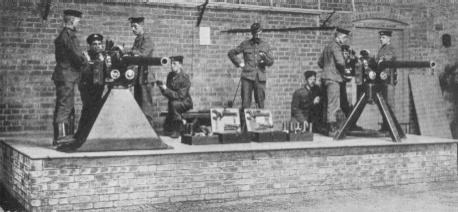The 1, 3 and 6-pdr. guns of the "New Navy" corresponded to certain calibers, respectively 37 mm (1.46"), 47 mm (1.85") and 57 mm (2.24"). The 1-pdr. was the smallest explosive shell allowed under the Rules of War as formalized in the late 19th century. The early guns of this type were purchased from the French firm of Hotchkiss and were introduced in the 1880s as a secondary weapon on larger vessels for defense against torpedo boat attacks. Later weapons were manufactured by Driggs-Schroeder and design control was asserted by the United States. The designations of these weapons in US service at first corresponded to those given by their individual manufacturers, but the US Navy later applied their own series of Mark numbers which were based upon when the gun entered service.
All of these guns were rapidly made obsolete by the rapid progress of torpedo weapons during the late 19th and early 20th centuries, which necessitated the use of larger-caliber guns to defend against torpedo attacks, but the start of World War I brought many of them back into service to arm small craft.
During World War II these guns were in the three Hawk class (AM-133) minesweepers and in such minor vessels as US Coast Guard cutters, converted yachts and Coastal Picket patrol craft.
Most guns were of built-up construction, but later ones featured monobloc barrels. The original Mark 1 gun had a barrel and short jacket with a locking hoop screwed to the front of the jacket. Mark 2 was similar but did not have trunnions. Mark 3 was the Hotchkiss Mark 1 (long). Mark 4 was a Driggs-Schroeder monobloc field gun with a revolving drop breech block. Mark 5 was a Lynch field gun. Mark 6 was the Driggs-Schroeder rapid-fire Mark 1 gun. Mark 7 was the Hotchkiss Mark 2 (long). Mark 8 was the Driggs-Schroeder Mark 2. Mark 9 was the Maxim semi-automatic Mark 2 gun of monobloc construction with a vertical sliding breech-block. Mark 10 was the Nordenfeldt rapid fire Mark 2, similar in construction to the Mark 9. Mark 11 is undefined. Mark 12 was a Davis non-recoil gun. Mark 13 was a Davis non-recoil gun bored out to take a 9-pdr. (4 kg) projectile.
A gun list of 1901 shows 735 guns in service.
The data below applies to the 40 caliber Hotchkiss guns except where otherwise noted.
| Designation | 6-pdr. (2.72 kg) [2.244" (57 mm)]
Marks 1 and 2: 40 calibers Mark 3, 6 and 7: 45 calibers Mark 4 and 5: 30 calibers Mark 8: 50 calibers Mark 9 and 10: 42 calibers Mark 11: N/A Mark 12: 32 calibers Mark 13: 33 calibers |
|---|---|
| Ship Class Used On | Many |
| Date Of Design | 1883 |
| Date In Service | 1884 |
| Gun Weight | 849 lbs. (385 kg) |
| Gun Length oa | 97.63 in (2.480 m) |
| Bore Length | 89.8 in (2.280 m) |
| Rifling Length | 76.91 in (1.954 m) |
| Grooves | 24 |
| Lands | N/A |
| Twist | Uniform RH 1 in 30 |
| Chamber Volume | 46 in3 (0.754 dm3)
(may have been 50.23 in3 (0.823 dm3) for some guns) |
| Rate Of Fire | 20 rounds per minute |
| Type | Fixed |
|---|---|
| Weight of Complete Round | about 9.5 lbs. (4.3 kg) |
| Projectile Types and Weights | AP: 6.03 lbs. (2.74 kg)
Common Mark 3 Mods 3 and 4: 6.00 lbs. (2.72 kg) Common Mark 5 Mods 0 and 3: 6.00 lbs. (2.72 kg) |
| Bursting Charge 1 | AP: N/A
Common Mark 3: 0.24 lbs. (0.10 kg) Common Mark 5: 0.23 lbs. (0.10 kg) |
| Projectile Length | AP: N/A
Common Mark 3: 8.45 in (21.4 cm) Common Mark 5: 8.26 in (21.0 cm) |
| Cartridge Case Type, Size and Empty Weight | Mark 1: Brass, 57 x 307 mm, 2.13 lbs. (0.97 kg) |
| Propellant Charge | 1.1 lbs. (0.5 kg) |
| Muzzle Velocity | Early 30 caliber versions: 1,765 fps (538 mps)
Later 40 caliber versions: 2,240 fps (683 mps) |
| Working Pressure | N/A |
| Approximate Barrel Life | N/A |
| Ammunition stowage per gun | N/A 2 |
| Elevation | Distance |
|---|---|
| 45 degrees | 8,700 yards (7,955 m) |
| AA Ceiling | 10,000 feet (3,050 m) |
In December 1902 a BuOrd publication claimed that the 6-pdr. (2.72 kg) would "limit the torpedo boat to 1,000 yards (910 m), as the penetration of the shell is over 2 inches (51 mm) at that range."
| Designation | N/A |
|---|---|
| Weight | N/A |
| Elevation | Hotchkiss Mounts: -5 / +60 degrees
Non-recoil: -5 / +38 degrees AA mounts: -5 / +70 degrees |
| Elevation Rate | Manually operated, only |
| Train | 360 degrees |
| Train Rate | Manually operated, only |
| Gun recoil | N/A |
Most guns were on simple pedestal mounts. During World War I a taller mounting was provided for AA use.
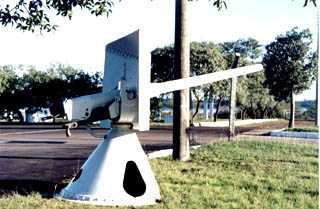
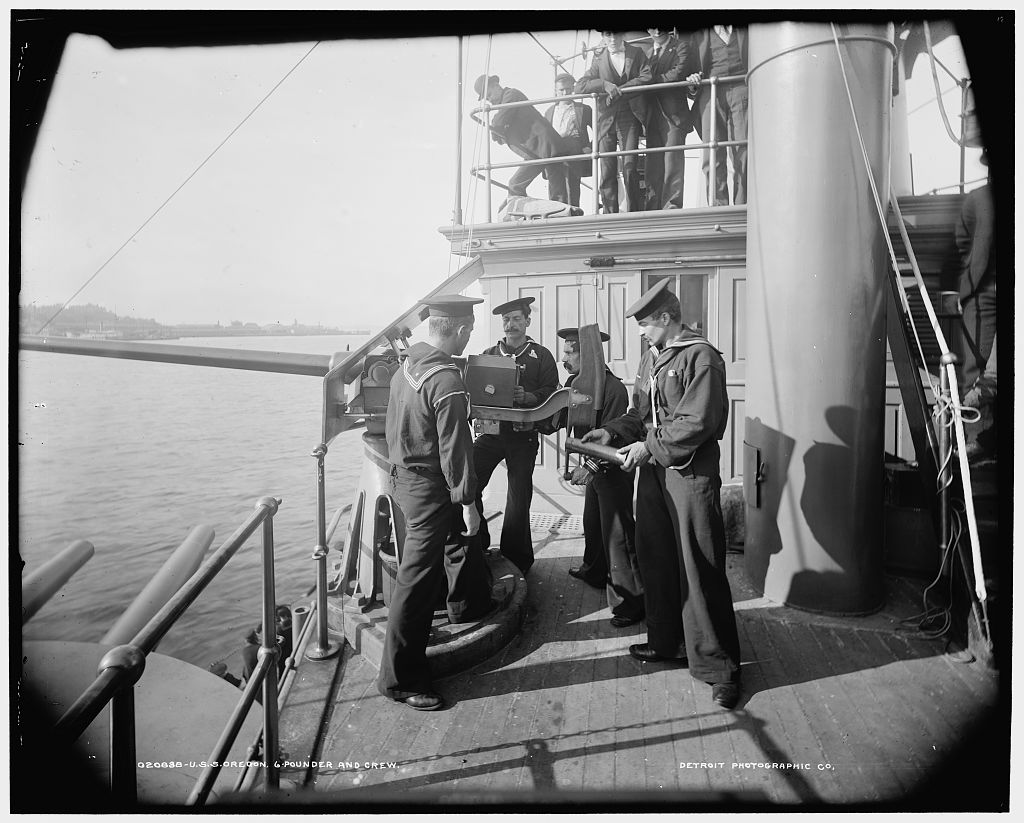
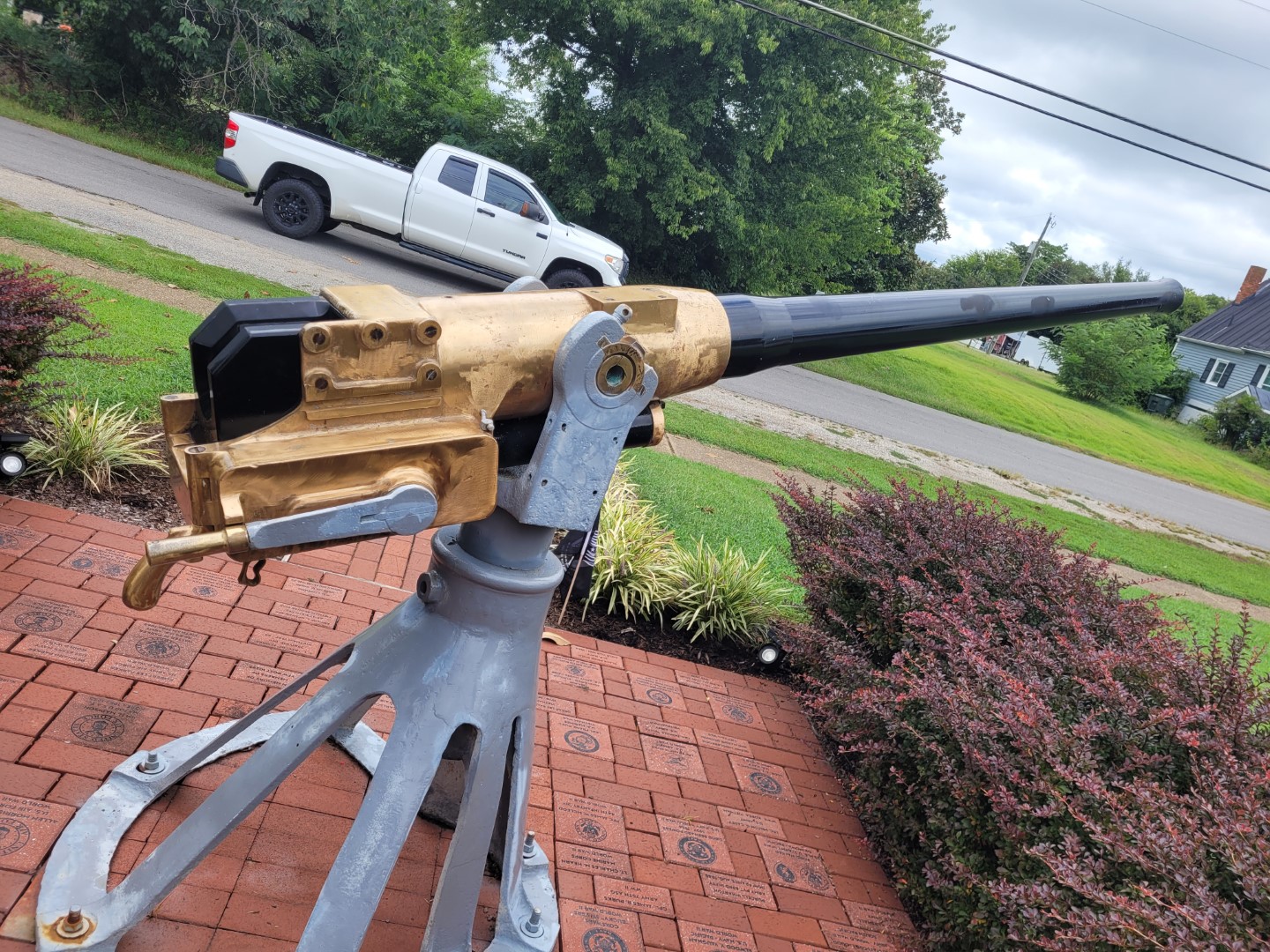
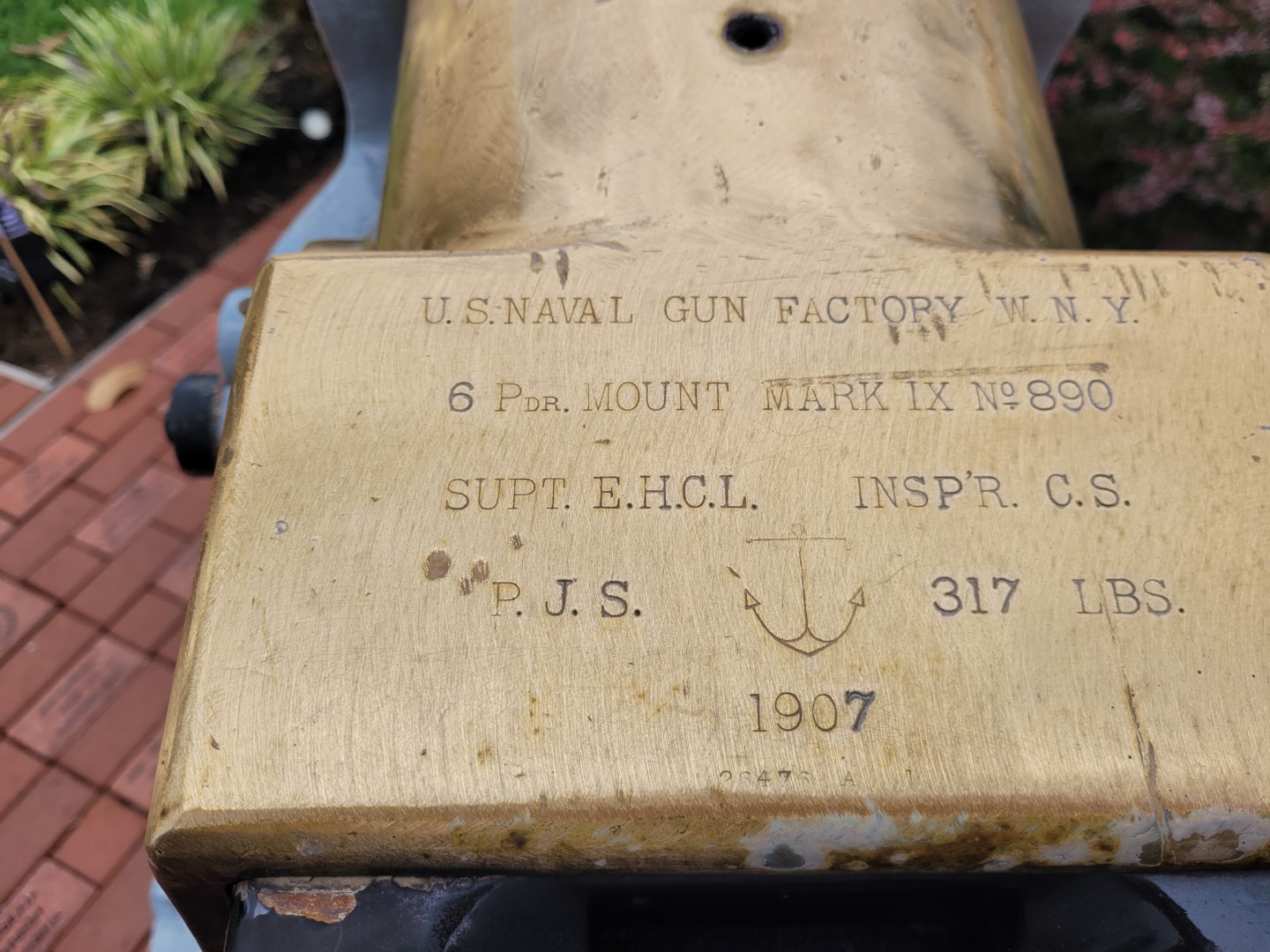
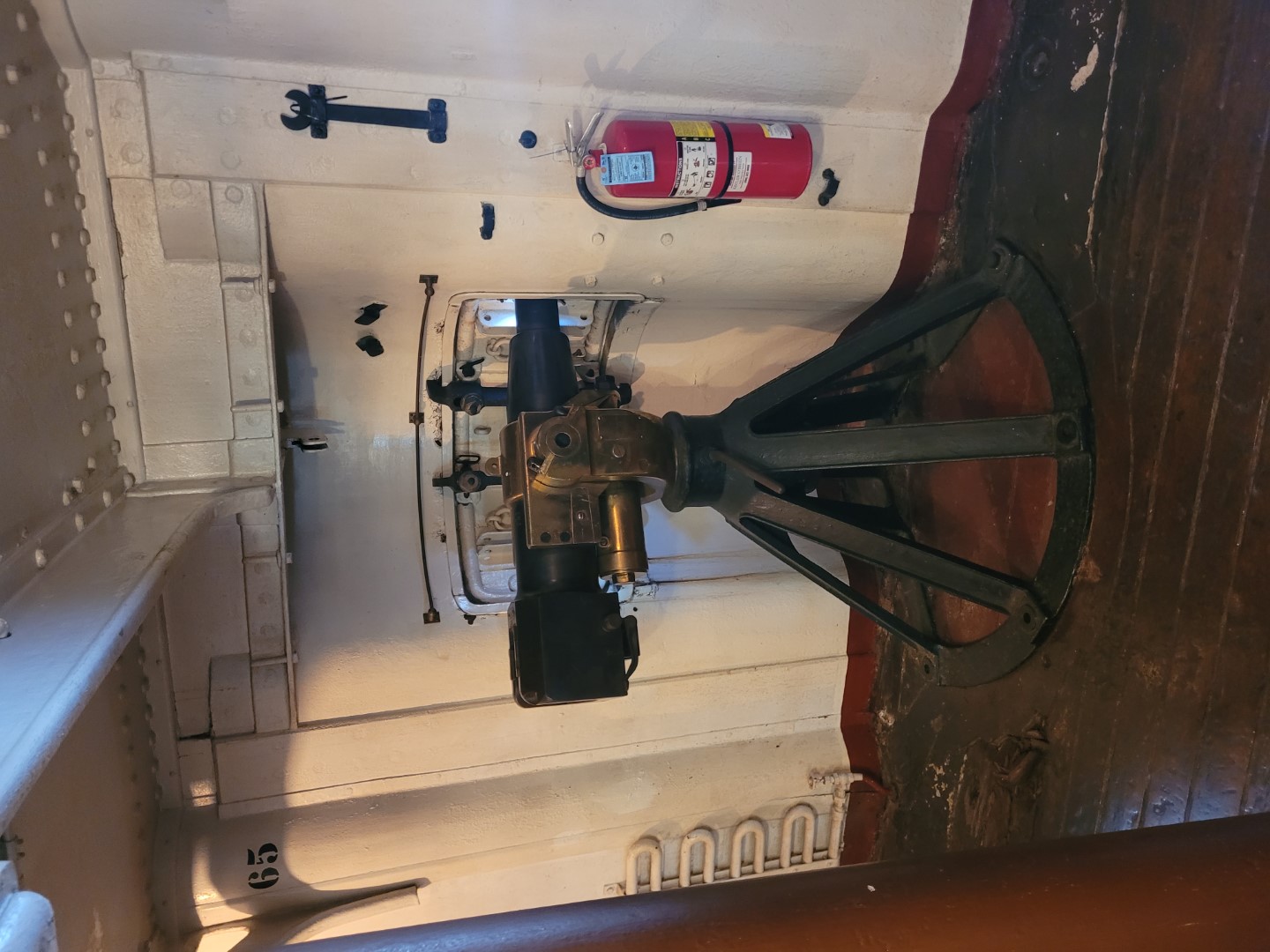
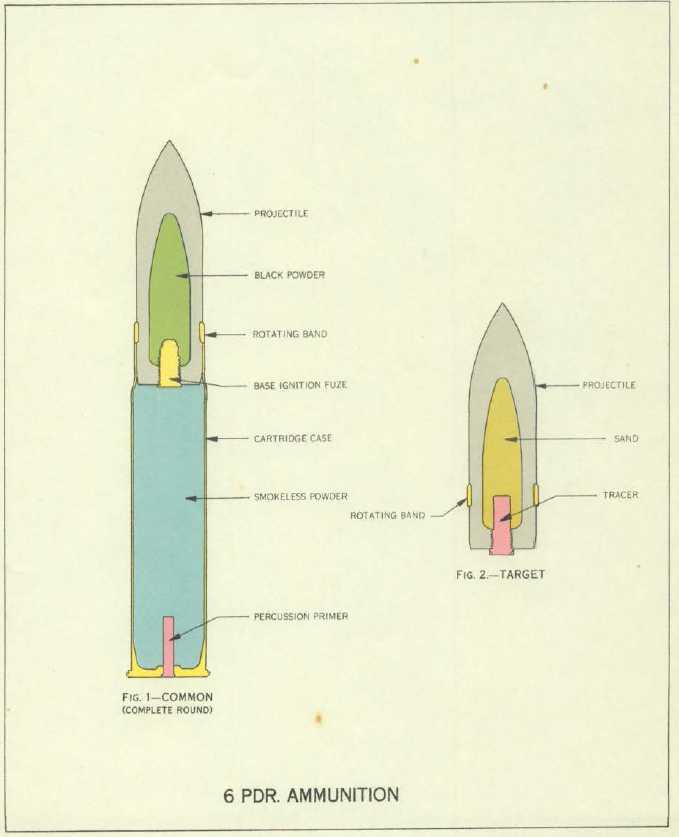
"Naval Weapons of World War Two" by John Campbell
US Naval Weapons" by Norman Friedman
A Treatise on Rifling of Guns" by Carl F. Jeansén
British Cruisers of World War Two" by Alan Raven and John Roberts
---
Ammunition: Instructions for the Naval Service: Ordnance Pamphlet 4 - May 1943" by Department of the Navy
U.S. Explosive Ordnance: Ordnance Pamphlet 1664 - May 1947" by Department of the Navy
---
Gene Slover's Navy Pages
---
Special help from Leo Fischer
06 April 2008 - Benchmark
14 January 2011 - Added cutaway sketch
31 August 2022 - Converted to HTML 5
30 August 2023 - Added photographs of gun at Port Royal, Virginia
15 October 2024 - Added photograph of gun on USS Olympia

